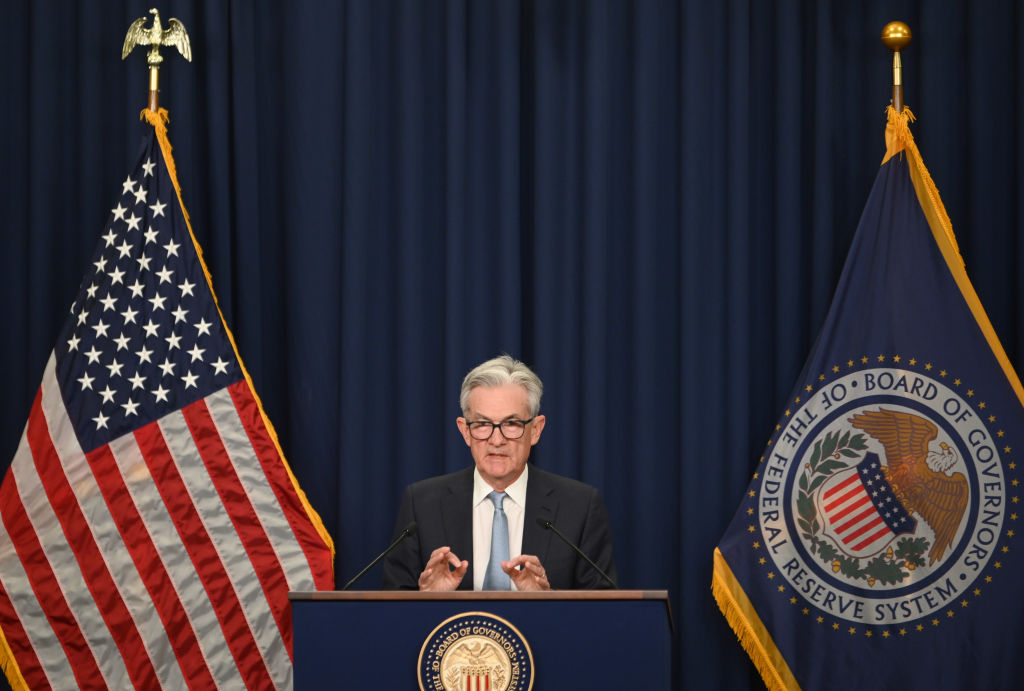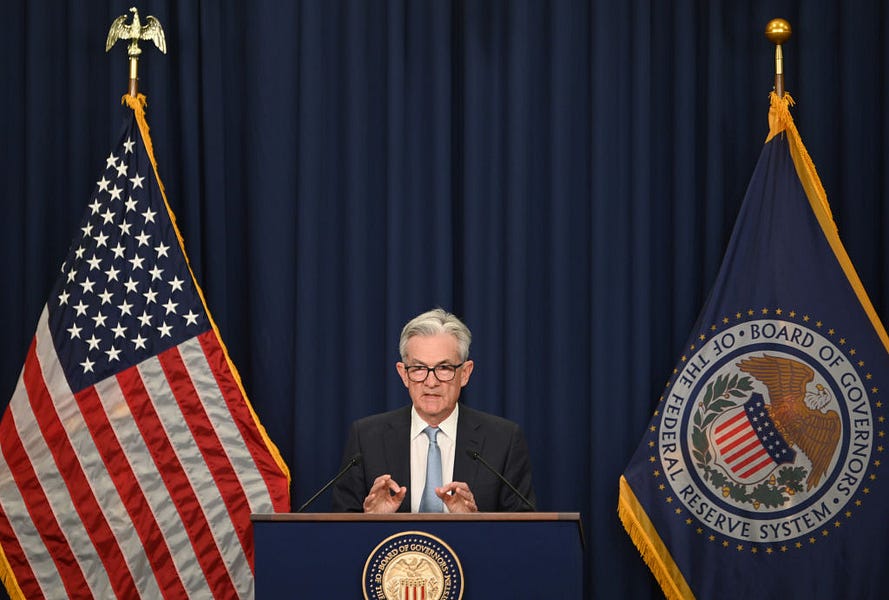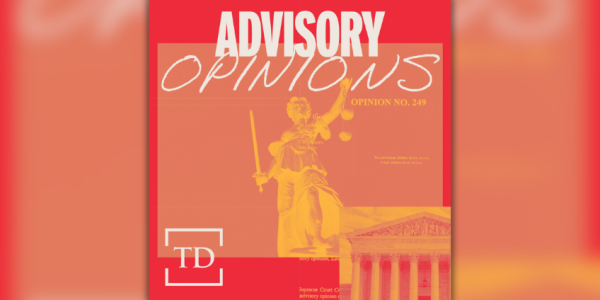Happy Thursday! After about 27 years, Microsoft ended support for Internet Explorer yesterday. Rest in peace: We’re a day late in bidding you farewell, just as you were in loading all our web pages.
Quick Hits: Today’s Top Stories
-
President Joe Biden announced Wednesday another $1 billion disbursement of military aid for Ukraine—including artillery, ammunition, and coastal defense systems—and $225 million in humanitarian aid for essentials like clean drinking water and medical supplies. Ukrainian official David Arakhamia said Wednesday that 200 to 500 Ukrainian soldiers are dying daily in the eastern Donbas region, though chairman of the joint chiefs of staff Gen. Mark Milley estimated it’s closer to 100 to 300.
-
The annual number of abortions in the United States increased by 8 percent from 2017 to 2020, according to the pro-abortion access Guttmacher Institute, ending an approximately 30-year decline in the American abortion rate. In 2020, one in five pregnancies ended in abortion, up from 18 percent in 2017.
-
The Commerce Department reported Wednesday that retail sales ended a five month streak of increases and fell 0.3 percent in May from April, not adjusted for inflation. Weak car sales drove the decline—without them, overall retail sales rose 0.5 percent.
-
The European Union on Wednesday signed an agreement to boost gas shipments from Israel and Egypt in a bid to replace Russian fuel. Officials didn’t specify how much more the countries might sell to Europe, but Russian gas company Gazprom has exported 29 percent less fuel so far this year than this time last year, and on Tuesday cut gas flow through the Nord Stream pipeline—an important fuel source for Germany—by 40 percent.
-
A key advisory committee recommended Wednesday that the Food and Drug Administration authorize the Moderna and Pfizer COVID-19 vaccines for children as young as 6 months old. The FDA will likely follow the committee’s recommendation, and pending Centers for Disease Control and Prevention signoff, the shots could be available to young children as soon as June 21.
-
President Biden on Wednesday signed an executive order directing the Department of Health and Human Services to create plans to fight “conversion therapy” worldwide, protect access to mental health care and medical procedures for LGBTQ people, and prevent discrimination against LGBTQ youth in foster care and would-be foster parents. The order is an effort to push back on moves such as Florida Gov. Ron DeSantis’ ban on Medicaid coverage for minors’ sex reassignment surgery.
-
A federal court on Wednesday indicted Californian Nicholas Roske for attempted murder of Supreme Court Justice Brett Kavanaugh, the Department of Justice announced. Roske had a handgun and burglary tools when he was arrested near Kavanaugh’s home last week. Congress this week passed legislation extending security protections to immediate family members of SCOTUS justices.
-
New Mexico’s Supreme Court on Wednesday ordered Otero County commissioners to certify primary election results two days after they refused to do so over unproven concerns of fraud via Dominion voting machines. Under state law, commissioners must demonstrate voting discrepancies to vote against certifying.
Fed Comes to Terms with What It Has to Do

Members of the Federal Reserve’s board of directors aren’t explicitly setting out to tank the economy. But they’re not opposed to cracking a few eggs to make a deflationary omelet, either.
That was the main takeaway from Wednesday’s Federal Open Markets Committee (FOMC) meeting, during which central bankers decided to raise the target federal funds rate by three-quarters of a percentage point—the largest single-meeting amount since Alan Greenspan led the Fed in 1994.
“We are not trying to induce a recession now, let’s be clear about that,” Federal Reserve Chair Jerome Powell told reporters in his post-FOMC press conference. “But we also think that you really cannot have the kind of labor market we want without price stability, and we have to go back and establish price stability so we can have that kind of labor market.”
“The worst mistake we could make would be to fail [to bring down inflation],” he continued. “It’s not an option. We have to restore price stability.”
Playing catch-up after incorrectly classifying inflation as “transitory” for most of 2021, Fed officials have now increased interest rates at three consecutive policy meetings, with each hike coming in larger than the last. In March, it was 25 basis points. In May, 50. Yesterday, 75, bringing the central bank’s overall target range for the federal funds rate between 1.5 and 1.75 percent—where it sat in the months leading up to the pandemic. The institution will also officially begin shrinking its bloated balance sheet, letting its holdings of Treasury and mortgage-backed securities mature without replacing them.
“Clearly, today’s 75-basis-point increase is an unusually large one, and I do not expect moves of this size to be common,” Powell said. But he hinted the Fed would likely unveil at least one more ultra-hawkish action at next month’s meeting, and the median FOMC member now projects federal interest rates will reach 3.4 percent by December 2022—up from a 1.9 percent end-of-year projection in March—and 3.75 percent by the end of 2023. If realized, those rates would return borrowing costs to a place they haven’t been since early 2008.
Although real interest rates (which account for inflation) remain firmly negative, Powell & Co.’s early moves—coupled with expectations of additional tightening in the coming months—are beginning to bear fruit, eliciting signs that an economy running red hot for more than a year is starting to slow. Demand for new homes is roughly half what it was at this time last year, as the average interest rate on a 30-year-fixed mortgage surges past 6 percent for the first time in nearly 15 years. Some of the most traditionally spendthrift companies in the country—Tesla, Meta, Uber, Salesforce, Coinbase, Spotify, Redfin—have announced plans in recent weeks to slow or freeze hiring, or even lay workers off. Sectors long considered bubbles by many analysts—crypto, tech stocks—have already burst in a major way. U.S. retail sales, which had continued to grow for months despite record-high price increases, finally cooled off somewhat in May.
“The tightening in financial conditions that we’ve seen in recent months should continue to temper growth and help bring demand into better balance with supply,” Powell said yesterday.
But it’s still nowhere near enough, as the Bureau of Labor Statistics reported Friday annual consumer price index (CPI) inflation had reached yet another four-decade high of 8.6 percent in May—two months after many economists hoped the figure had peaked. (Core CPI inflation—which strips out food and energy prices—has been on the downswing since March, but that’s a meaningless distinction for anyone who needs to eat and/or power things.) Powell attributed much of that resurgence to factors outside of U.S. policymakers’ control—Russia’s invasion of Ukraine, COVID-zero lockdowns in China—but Friday’s report ultimately convinced all but one member of the FOMC to vote for a 75-basis-point increase, rather than another 50-basis-point one.
If you happened to notice your 401(k) is about 6 percent smaller than it was a week ago, that’s why. “There was hope in the market that we had already reached peak inflation, and that Friday’s number would come in a little below expectations,” Brendan Walsh, co-founder of Markets Policy Partners, told The Dispatch. “When it came in higher, then the market flipped, and went from thinking the Fed might be able to get out of this without being too crazy to thinking the Fed is behind the curve.” When a Fed official leaked the possibility of a 0.75-percent hike to The Wall Street Journal on Monday, stocks tumbled yet again. By Wednesday, the market was just grateful central bankers didn’t go even further, to 100 basis points; the S&P 500 finished the day up 1.5 percent.
Although many inflation hawks will be clamoring for another 100 basis points—or more—at the Fed’s next meeting in July, Powell seemed to rule that out yesterday. “From the perspective of today, either a 50-basis-point or a 75-basis-point increase seems most likely at our next meeting,” he told reporters. But events have a way of intervening; Powell dismissed the idea of 75 basis points a month ago.
For Walsh, the most important message central bankers signaled on Wednesday was their willingness to tip the country into recession if necessary to bring prices to heel. Although Powell downplayed the possibility in his press conference, the FOMC’s latest projections for the next three years now show unemployment rising from 3.5 percent this year to 4.1 percent in 2024, and GDP growth stalling out at 1.7 percent this year and next. In March, they had predicted 2.8- and 2.2-percent growth, respectively.
“I wouldn’t necessarily get too caught up in the numbers, that that’s exactly where they see each month and quarter. But clearly their models have adjusted and they see inflation coming down much slower than they had previously thought and unemployment going up,” Walsh said. “They’re basically telling you, ‘We’re going to tighten the economy enough to slow it—not just inflation, but also growth.’ And with that, unemployment is going to go up a little bit too.”
Crypto Crash
As we noted above, the cryptocurrency market is in trouble. Bitcoin, the oldest decentralized cryptocurrency and the one with the largest market share, has lost over 55% of its value since Jan. 1, with a particularly precipitous drop in the last week. Celsius, a bank-like crypto lending platform, paused all withdrawals on Sunday due to “extreme market conditions.” And Coinbase, an exchange platform, is just one of many companies in the industry announcing mass layoffs.
Although “maximalist” Bitcoin enthusiasts envision cryptocurrency as an eventual replacement for fiat currencies like the U.S. dollar, cryptocurrencies are better understood as a technology or method of payment. The goal of cryptocurrency is typically to eliminate the need for middlemen in financial transactions—whether banks, corporations, or government entities.
In practice, however, the crypto market has come to more closely resemble other financial markets. Norbert Michel, a monetary policy expert at the Cato Institute, told The Dispatch the technology “allows you to send some kinds of payments to somebody else directly, just like an email.”
“It turns out, though, that a lot of people like having an intermediary still—and for different reasons—but that’s enabled companies like Coinbase to set up an exchange so that you can buy and sell this stuff more easily and have an account somewhere,” Michel said. “But the difference between what they’re doing and what traditional intermediaries are doing shows up in both the record of those transactions and then the settlement of those transactions.”
Cryptocurrency transactions are settled and verified instantaneously, and the record of transactions is kept permanently by a network of computers.
Unlike traditional currency, cryptocurrency can have much stronger built-in supply constraints. While monetary policymakers in the United States can adjust our money supply, only 21 million Bitcoins will ever exist, and changing that number would be almost impossible due to the decentralized nature of the computer network that “mines” Bitcoins and verifies and records transactions.
Why is crypto crashing?
The short answer is that no one really knows. If investors and companies could predict the exact timing of events like these, they would be losing much less money than they are. But Luke Lloyd, a wealth adviser and investment strategist at Strategic Wealth Partners, told The Dispatch he sees the crypto bubble as part of a larger asset liquidity bubble.
Bitcoin was first introduced in 2009, in the midst of the Great Recession. In the years since, three factors have combined to create the crypto bubble: a “flood of liquidity” as a result of economic stimulus, including “quantitative easing” of the money supply; frustration with the government over the handling of the housing crisis; and widespread FOMO (fear of missing out). Now, we’re partway through that bubble bursting. High inflation is the “main problem,” Lloyd said. Inflation and low consumer confidence have made people much less willing to engage in high-risk speculation, both in the crypto market and the stock market.
In fact, the price of Bitcoin is increasingly correlated with the price of tech stocks. One important difference, however, is that unlike stocks and bonds, the value of cryptocurrencies like Bitcoin is “solely based on supply and demand.” Cryptocurrencies themselves don’t have quarterly earnings to report, though the companies that trade and market them might.
The crypto crash is often compared to that of the dot-com bubble of 2000. Most dot-com companies did not survive the bursting of that bubble, and Lloyd predicts that the vast majority of cryptocurrencies and crypto companies will not survive this crash. The ones most likely to survive are those with the largest share of market value, such as Bitcoin and Ethereum.
How a 1946 dispute over Florida orange groves is shaping the future of crypto regulation.
As prices have decreased, lawsuits have increased—and one of the keys to settling those lawsuits is whether digital cryptocurrency tokens should be defined as securities (and thus regulated by the Securities and Exchange Commission) or commodities (regulated by the Commodity Futures Trading Commission). The crypto enthusiasts who run platforms like Celsius and Coinbase generally prefer to view digital tokens as commodities, like a kind of digital gold. Investors who have lost money often allege that the tokens are unregulated securities and should be viewed more like stocks.
The most important legal precedent on these matters is the 1946 Supreme Court case SEC v. W.J. Howey Co. In a blog post for the Cato Institute, Jack Solowey explains:
Howey sold orange groves in Florida; he also offered purchasers a contract selling
a service that would manage the groves on the purchasers’ behalf and give them a cut of the profits from the orange sales. The Supreme Court famously found this arrangement to be an investment contract and therefore a security.
The case established the “Howey test,” which defines a security as a scheme involving “an investment of money in a common enterprise with an expectation of profits derived from the efforts of others.”
Republican Sen. Cynthia Lummis of Wyoming and Democratic Sen. Kirsten Gillibrand of New York recently released a bill that aims to clarify where cryptocurrency fits into the financial landscape. Solowey writes that “the question that the Lummis-Gillibrand bill seeks to answer is less ‘whether’ it is the SEC or the CFTC that has a role to play in crypto regulation so much as ‘when’ each agency does.” Under Lummis-Gillibrand, while digital tokens themselves would qualify as commodities much of the time, they may be “sold alongside an investment-like opportunity that helps to finance a crypto project”—and such investment contracts would in most cases be securities.
The bill doesn’t provide a comprehensive answer as to how securities should be regulated, and it’s still far from becoming law. But a clearer consensus between among Congress and the relevant regulatory agencies is likely necessary to achieve greater stability in the marketplace of cryptocurrencies.
Worth Your Time
-
The realist approach to foreign policy has gotten a bad rap recently as its practitioners seemed to urge appeasement in the face of Russia’s aggression toward Ukraine. But let’s not throw the baby out with the bathwater, Paul Poast pleads for Foreign Affairs. “In explaining the war in Ukraine, realism, like any theoretical framework, is neither good nor bad,” Poast writes. “But even when its prescriptions can seem unsound, it retains value as a prism through which analysts can understand the motivations and actions of states in an inevitably complex world. … Realism’s role is to continually point to the gravity that undercuts human attempts to fly.” Realism can help explain why wars occur, Poast says, but changes when it moves from descriptor to policy driver. “When brought into policy, realist theory becomes realpolitik: the position that states should balance against their adversaries and seek relative gains rather than accept supranational and institutional constraints on their freedom of action in international affairs.”
-
This charming op-ed about a childhood Pinewood Derby includes a wholesome life lesson and the greatest model car name of all time. Bonus points if you can guess the author’s profession before reaching the end. “As a bookworm who could barely hammer a nail, I had absolutely no talent for any kind of carpentry or handiwork,” Gregg Opelka writes for the Wall Street Journal. “On the night of the derby, my father generously told everyone that I was an equal partner…I knew better, and the kudos I received from my friends and their parents left me feeling empty. Getting praise for someone else’s talent and hard work seemed like stealing. The next day, I made myself a promise: In all future endeavors, I would rely on my ability alone. Even if that meant failing.”
Presented Without Comment
Also Presented Without Comment
Toeing the Company Line
-
On today’s episode of Advisory Opinions, Sarah and David tackle six Supreme Court opinions released Wednesday, including one involving a Native American tribe in Texas. Plus: Thoughts on Tuesday’s primaries in South Carolina, and the latest news out of the Southern Baptist Convention.
-
Jonah is joined on the latest Remnant podcast by Rev. Robert Siciro, co-founder and president of the Acton Institute and author of The Economics of the Parables, which attempts to glean economic wisdom from Christ’s moral stories in the Gospels. They discuss the Catholic intellectual tradition’s relationship with capitalism and to what extent religion should influence politics.
-
This week’s Capitolism (🔒) has been entered into the congressional record! Scott testified before the Senate Judiciary Committee’s Subcommittee on Competition Policy, Antitrust, and Consumer Rights on Wednesday about the baby formula shortage, and yesterday’s newsletter is a (lightly) edited version of his opening statement. “The U.S. infant formula market is indeed concentrated,” he writes, but “these problems are not the natural result of a relatively free market in desperate need of new antitrust regulation. Instead, they have been caused in no small part by government policies that restricted competition from abroad, bolstered the dominance of a handful of large domestic corporations, and stifled new market entrants.”
-
Biden wants Congress to pass a law taxing oil companies’ “obscene profits,” which is well and good—except that it’s a terrible idea, it didn’t work before, and it won’t work now, Jonah argues in the latest G-File (🔒). Case closed.
-
On the site today: Intern Mary Trimble digs into French President Emmanuel Macron’s attempts to triangulate between supporting Ukraine and avoiding “humiliating” Russia, Daniel Blumenthal argues that containing China will require stabilizing U.S. ties with the Philippines, and Patrick T. Brown analyzes Sen. Mitt Romney’s updated proposal to collapse most federal child-support provisions into a single monthly child benefit.
Let Us Know
Do you still think the Fed can pull off a “soft landing,” or are you bracing for a recession? If the latter, anything you’re doing to prepare?










Please note that we at The Dispatch hold ourselves, our work, and our commenters to a higher standard than other places on the internet. We welcome comments that foster genuine debate or discussion—including comments critical of us or our work—but responses that include ad hominem attacks on fellow Dispatch members or are intended to stoke fear and anger may be moderated.
You are currently using a limited time guest pass and do not have access to commenting. Consider subscribing to join the conversation.
With your membership, you only have the ability to comment on The Morning Dispatch articles. Consider upgrading to join the conversation everywhere.